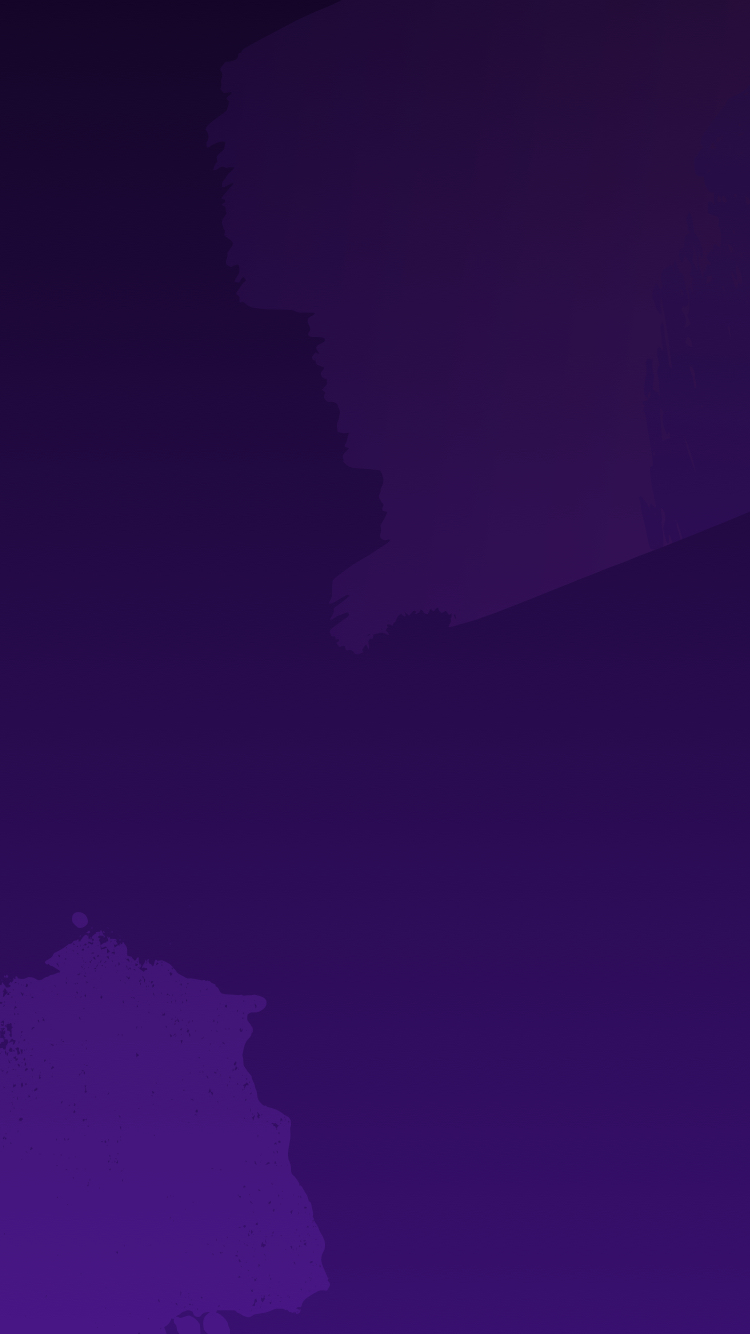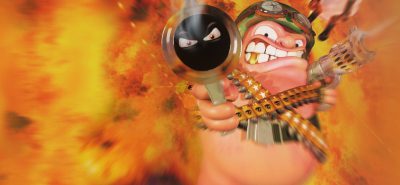Welcome to the latest chapter in our look back at the first 100 games of Team17, celebrating the release of PLANET ALPHA. In this chapter, we’re taking a look at the years 1999 and 2001 (we took the year 2000 off out of fear of the millenium bug). This period saw us move further into multiformat development, including a trio of Dreamcast releases, further improve on the Worms 2 formula and publish what would be our last ever racing game.
Missed a previous chapter? Check out the previous entry on 1997-98 or start at the beginning with 1991-92.
36/100
Arcade Pool II
Year: 1999 | Developer: Team17 | Publisher: Microprose | Format: PC
Like the first Arcade Pool, this PC-only sequel eschewed 3D simulation in favour of a simpler top-down presentation that anyone could play, but it did boast some minor improvements such as high resolution (well, 640×480) tables, atmospheric background noises based on a pool hall and pub, and the ability to listen to your own music CD while playing. It also allowed local area multiplayer via networked PC, though you could of course play just as well on one screen.
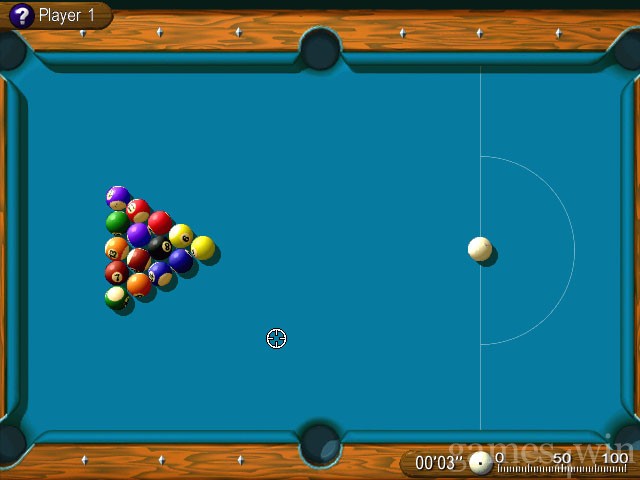
“Arcade Pool II was my first project on Windows and the aim was simply to bring the original game philosophy towards the end of the millennium with a richer appearance, confirms creator Mario Savoia. “That was also the dawn of massive console development and the game struggled to find a place in a changing industry.” Indeed, Arcade Pool II never quite gained the following of its Amiga predecessor and is mostly forgotten nowadays. If you do happen to find a copy and have the right kind of Windows to run it then we still recommend it though. Arcade Pool II remains a nice desktop distraction. Something to play on a lunch break perhaps?
37/100
Worms Armageddon
Year: 1999 | Developer: Team17 | Publisher: Microprose | Format: Dreamcast, Game Boy Color, Nintendo 64, PC, PlayStation
Buy at Steam or GOG.com
It’s amazing how something incredible can grow from humble beginnings. Worms Armageddon is without doubt one of our best selling, best remembered, and what many consider to be the definitive 2D Worms game. But it could have been so different had the game originally been a Worms 2 expansion pack as conceived!
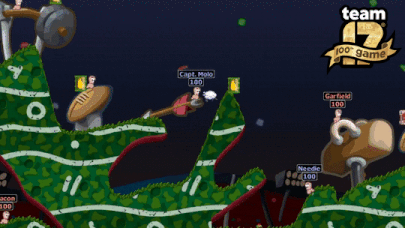
Worms Armageddon, as its name suggests, was so stuffed with content that it just had to be a full release! The game boasted an incredible 55 weapons, 40+ single player missions, 30 custom sound banks and tons of ways to customise the game to the player’s liking. New weapons included the likes of the Sheep Launcher, Battle Axe, Longbow, Aqua Sheep, Mole Bomb, Scales of Justice, Flame Thrower, Super Banana Bomb, the Skunk and, of course, the landscape obliterating Armageddon!
Reviews for Worms Armageddon were unsurprisingly positive. UK magazines PC Gamer and PC Zone both awarded the game a 90%, and by this time the earliest internet sites were also getting in on the action, with reviews that can still be read to this day. IGN awarded Worms Armageddon a respectable 8.6/10 while Gamespot went with a 9.1, calling it “as sophisticated and enjoyable as the very best strategy games out there.”
Worms Armageddon remains an important part of Team17 history. It served as the inspiration for 2009’s Worms 2 Armageddon, was our design touchstone for 2016’s Worms W.M.D and the original game itself even continues to be supported. We released a Windows 10 compatibility update just this year, nearly two decades after release! Finally, at the time of writing, we’re also giving away Worms Armageddon to anyone who buys PLANET ALPHA on Steam, as part of our 100th game celebrations. So if you’ve ever wondered why this particular Worms is so beloved, now is the time to find out!
PS: Here’s a Worms Armageddon TV advert from 1999!
38/100
Phoenix
Year: 1999 | Developer: Team17 | Publisher: Microprose | Format: PC
A deep space, 3D exploration game that also incorporated a branching film noir detective story… Phoenix was nothing if not ambitious. “Agh, don’t remind me! Three guys trying to make an epic space-opera with a 3-man-year software renderer just as graphics accelerators were taking off. I can’t believe it made it to the shelves,” says programmer Andy Clitheroe.
Thankfully, Phoenix’s other programmer Charles Blessing is a little more comfortable discussing the project. “Neither Andy nor I had ever really done much programming on PC. When we finished Alien Breed 3D II, that’s when things changed. The Amiga was coming to the end of its life, and T17 wanted to move more into PC gaming. Andy and I had been talking about what we were going to do next, and he had a few funky ideas for a potential new rendering technique. That quickly turned into a 3D demo that suited the space genre. So we got a couple of spaceship models and started playing around. I worked on the framework and Andy worked on the rendering engine, and soon we had the beginnings of Phoenix.”

“We were programming on an entirely new system, in an entirely new language, so progress was initially quite slow. This was back when Windows 95 was brand new. At that time, if you wanted to play a game, you quit Windows and went back to DOS, so that’s where we started. By the time we’d got something resembling the beginning of a game, Windows was becoming more popular and nobody used DOS, so we converted everything over to Windows and carried on.”
As development progressed on Phoenix, PC technology increased at a rapid rate, requiring the team to continuously update the game engine to keep pace. PowerVR came and went but was ignored because Phoenix’s software solutions were already more advanced, but when 3DFX’s Voodoo cards came along and later Direct3D, both had to be taken into account. “It felt like a never-ending battle of new formats,” says Blessing.
“Somewhere in the middle of all this, we’d come up with a plot and started thinking about actual gameplay. Team17 hired its first lead designer, John Dennis, and we spent a lot of time thrashing through the complex storyline. Unlike other mission-based games at the time, we wanted to make it so that the outcome of the mission made a difference, so failing didn’t necessarily mean the end of the game. This meant that there was a load of replay value, but to be honest, I doubt many people played it more than once.”
The storytelling was just as ambitious as the game design, and even included a 28-page novella in the box to help set the scene. “We created an elaborate and rich story, which I feel was really ahead of its time,” says Cris Blyth who had created the live action sequences for Alien Breed: Tower Assault and helped created the FMV scenes for Phoenix. “The story even involved a love triangle between a widow and her late husband’s best friend. We created some really interesting narratives.”
Finally, Blyth reveals one of the most bizarre facts we could possibly imagine about Phoenix… “There were early discussions of having Radiohead licence us music. In fact, a whole sequence was edited to ‘No Surprises’. Sadly it was not to be.”
Check out some stills from Phoenix, along with a score from the soundtrack by the super talented Bjorn Lynne…
39/100
Worms World Party
Year: 2001 | Developer: Team17 | Publisher: Titus | Format: Dreamcast, Game Boy Advance, N-Gage, PC, PlayStation
Originally conceived as a Dreamcast exclusive, Worms World Party was intended to be an update of Worms Armageddon but with online play added in. After a switch of publisher, from Microprose to Titus, it was decided that the game would also come to PC and other consoles too – not all with online play for obvious reasons – and with extra content such as single-player missions to stand alone as a full sequel.
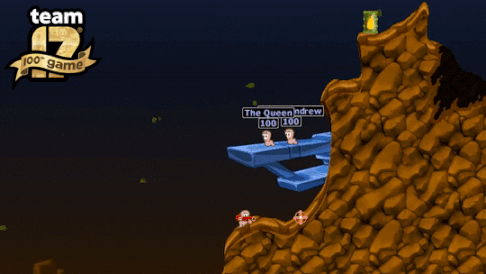
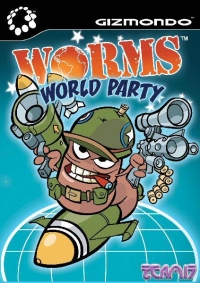
As well as a really good N-Gage port, Worms World Party was also in the works for the ill-fated Gizmondo but, well, it was so ill-fated the platform was abandoned before the port was released.
Kevin Carthew, now creative director at Team17, took his first game design role on Worms World Party and says that making the game feel like a significant sequel to Armageddon, on a small team, was one of the biggest challenges. “For a lot of the missions we ended up using leftover concept art from Worms Armageddon to create the landscapes,” he recalls, “and had to do what we could with design and scripting to make the missions feel like a step up. We pushed the scripting language and got a few days’ worth of tweaking to enable us to make new missions, with new features such as mines bouncing around as hazards.” New additions like the Wormopaedia – a resource to explain the ever-growing weapons and features with gameplay tips for each – and the Wormpot – a handy way to randomise play settings and keep things fresh – were relatively simple design choices that added value to World Party.
“I loved playing around with the tools to try and come up with the most interesting mission designs I could,” says Carthew. “Some of the missions were new and had more arcade styles of gameplay, and were completely different from previous single player Worms. We pushed the design further in later expansion packs, one of which played like Nintendo’s Donkey Kong. In the original prototype of that mission I actually cribbed some of the graphics from Donkey Kong to make the mission, and we had mines roll down the platforms instead of barrels. It was all made entirely using worms objects and the existing tools, with no extra art or code; just clever design. The lead programmer took one look at it, rubbed his eyes and said “F*** off!” It was really cool to be able to make an impression on the other team members, even when we were all so green in development.”
“I’m most proud of the project overall,” says Carthew, “how it came together and stood on its own despite its short dev time and very small team. We were all really inexperienced but we had a huge say in the direction of the game, and we all worked as well as we could to prove ourselves.”
Worms World Party went on to become another popular and well-remembered 2D Worms, particularly among Dreamcast players who only had a handful of online games to take advantage of their console’s unique features. In later years it was ported to ever more systems including one for Nokia’s mobile platform, N-Gage, which Carthew calls “a perfect conversion” by Dutch developer Two Tribes. Finally, World Party even received its own remaster in 2015, but you’ll have to wait for a future chapter to read more about that.
40/100
Stunt GP
Year: 2001 | Developer: Team17 | Publisher: Eon | Format: Dreamcast, PC, PlayStation 2
Arcade racer Stunt GP was the brainchild of Peter Opdam, who co-developed the PC version of Worms and earned his racing stripes with Grandslam’s Bump ‘N’ Burn on CD32, and also featured work from World Rally Fever’s Patrick Romano and All Terrain Racing’s Danny Burke – a sort of Team17 super group of racing game creators.
“Stunt GP was a very ambitious project for its time,” says Opdam. “From a gameplay perspective I wanted a blend of the best bits of various racing games that I was, or had been, obsessed with and mix it up with cutting edge technology. I remember controlled high jumps and large ramps were something I always had as a clear objective. I wanted the game to give the players the feeling that they were capable of these crazy stunts and be in complete control of their supercharged vehicles.”

“At the start of the project we struggled a bit with the graphical direction,” Opdam continues, “but when Danny Burke came on board everything started to fall into place. The vehicles and environments very quickly began to look great with their bold colours and style, and we knew then that we had something special. Later in the project other great artists were added to the project as the amount of required graphics was huge. I remember it being a very creative time with the entire team super focused on extracting the maximum possible from all versions of the game.”
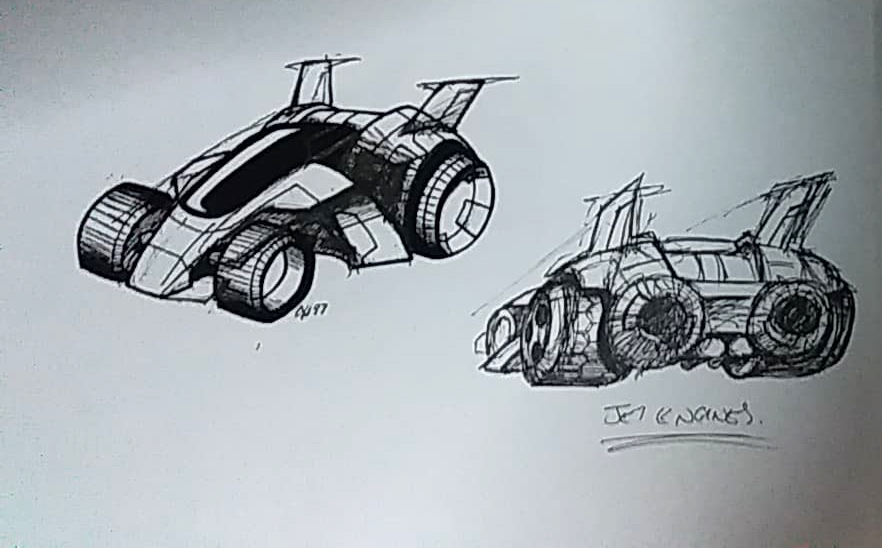
Original Stunt GP concept art by Danny Burke
“Stunt GP was so much fun to develop that it didn’t feel like work,” enthuses Danny Burke. “I like to play the PlayStation 2 version with the enhancements. The visuals and the playability are a perfect match, just fun to play. Both Pieter and I were very happy with the way Stunt GP turned out!”
Opdam shares similar feelings… “I had a chance to work with some amazingly talented people creating a really great product and having a lot of fun doing it! When you see people thoroughly enjoy a game you’ve worked on, it makes all the lost sleep worth it!”
That’s all for the heady heights of 1999 and 2001 but not 2000. Join us next time for a journey back to 2002-04, in which the Worms crawled into the third dimension, into a puzzle game and even onto Sky TV!
Until then, why not check out our previous chapters, starting all the way at the beginning in 1991 or tell us which of our 100 games is your favourite by taking to Twitter and using #100Team17.
